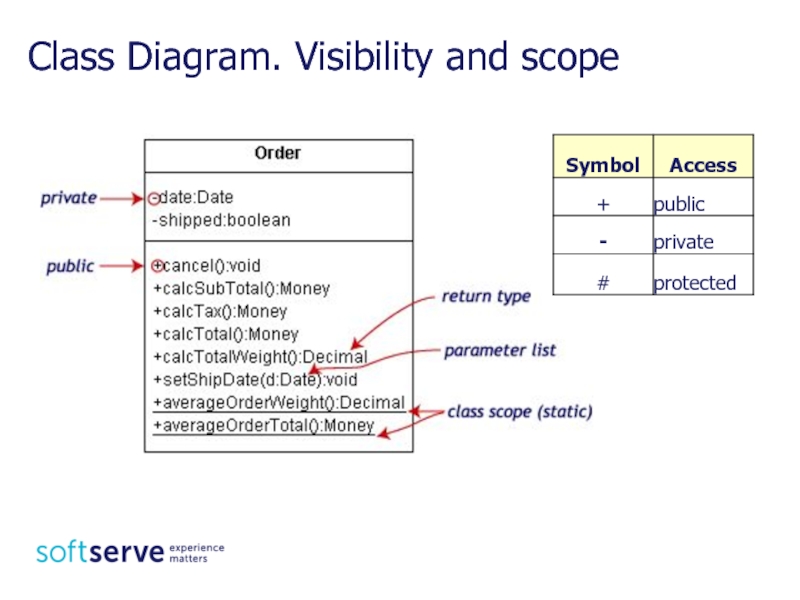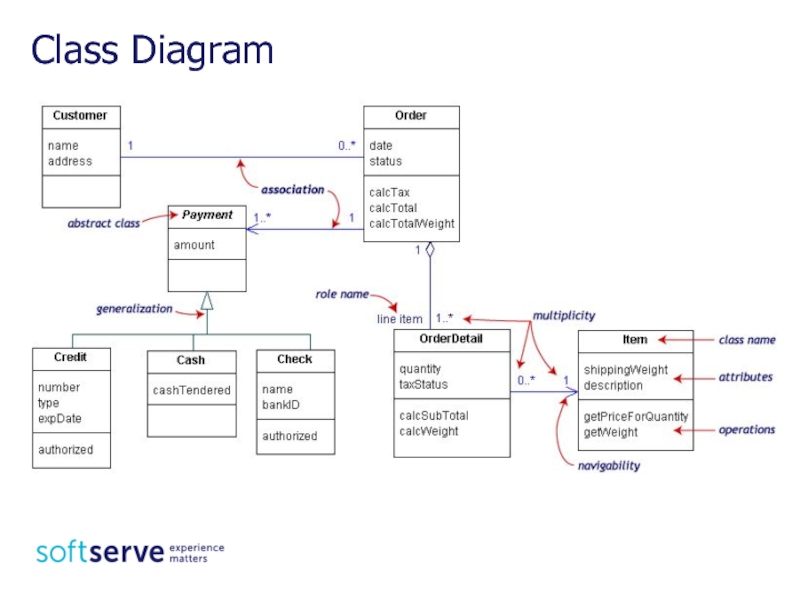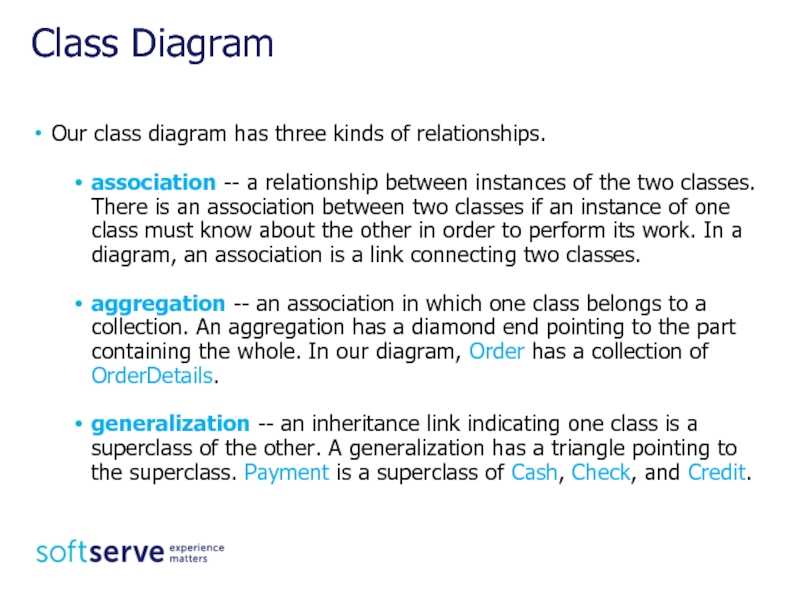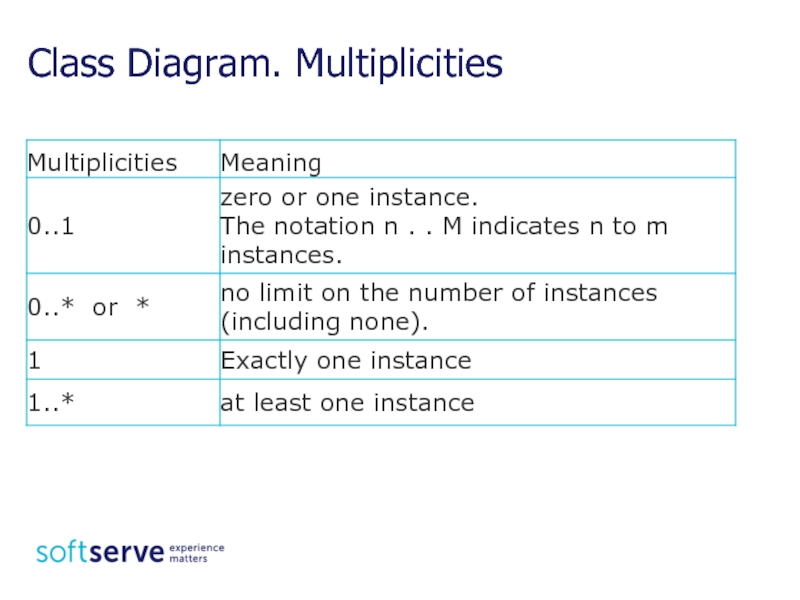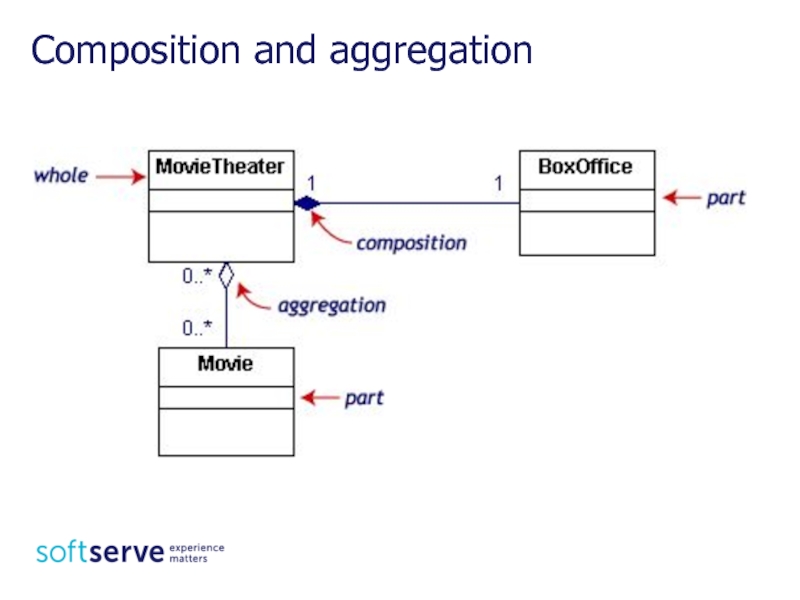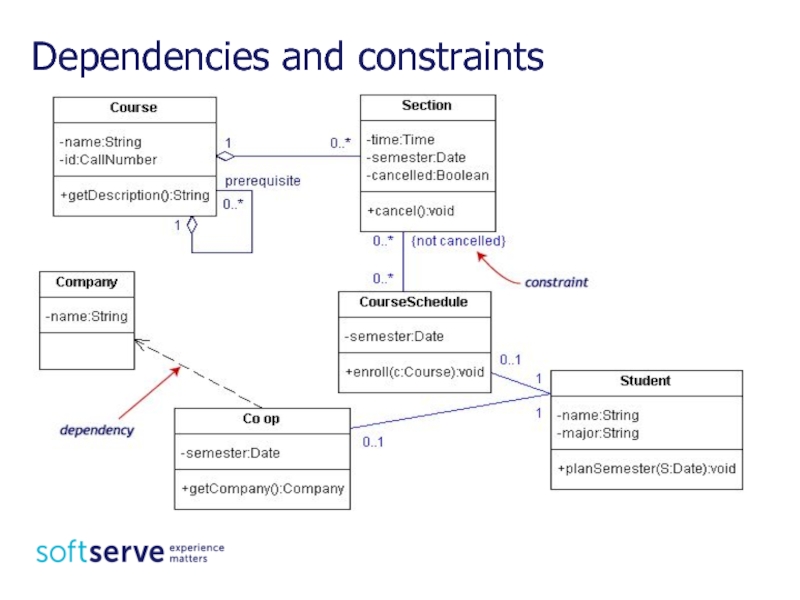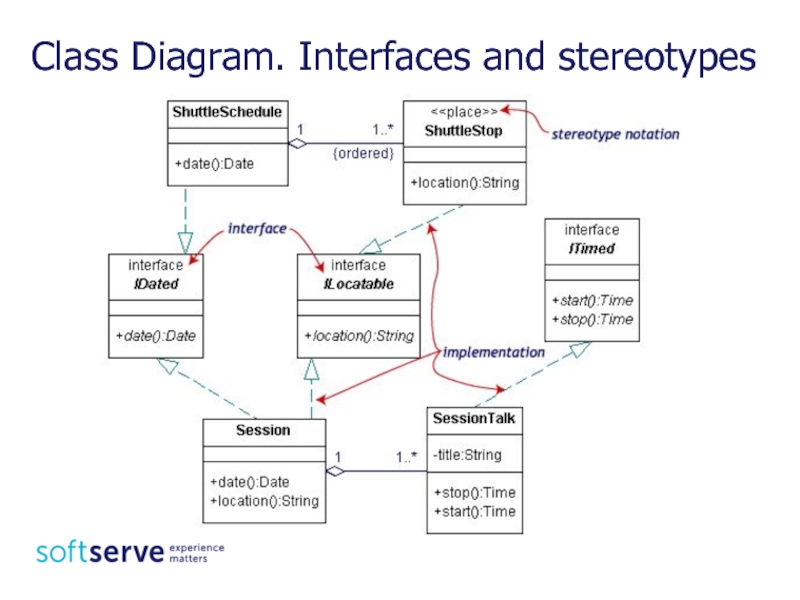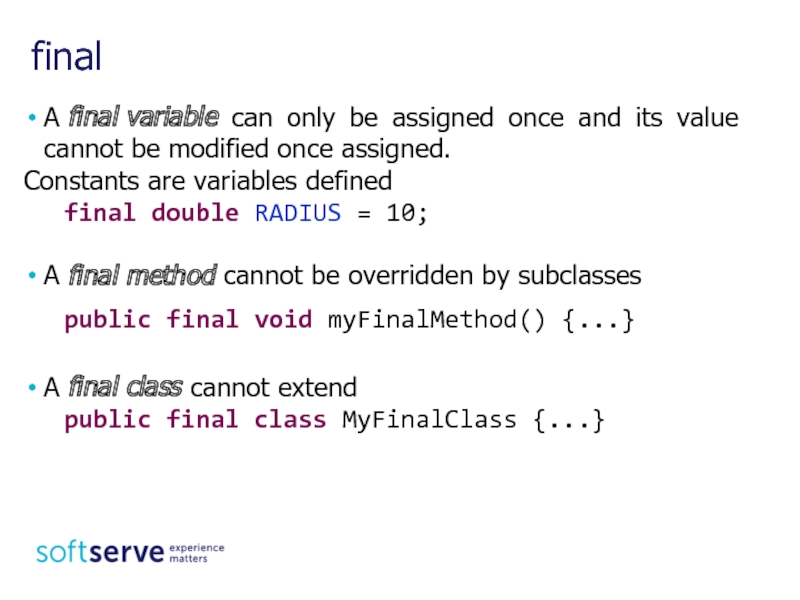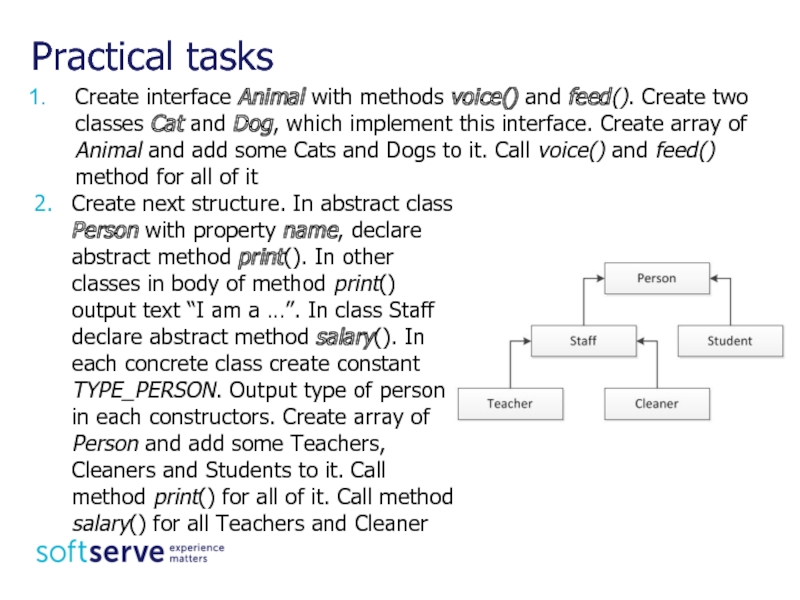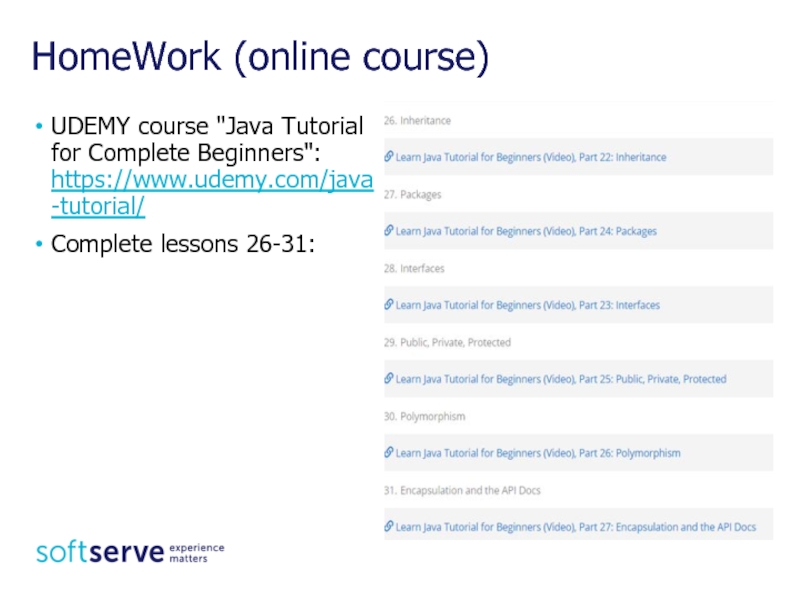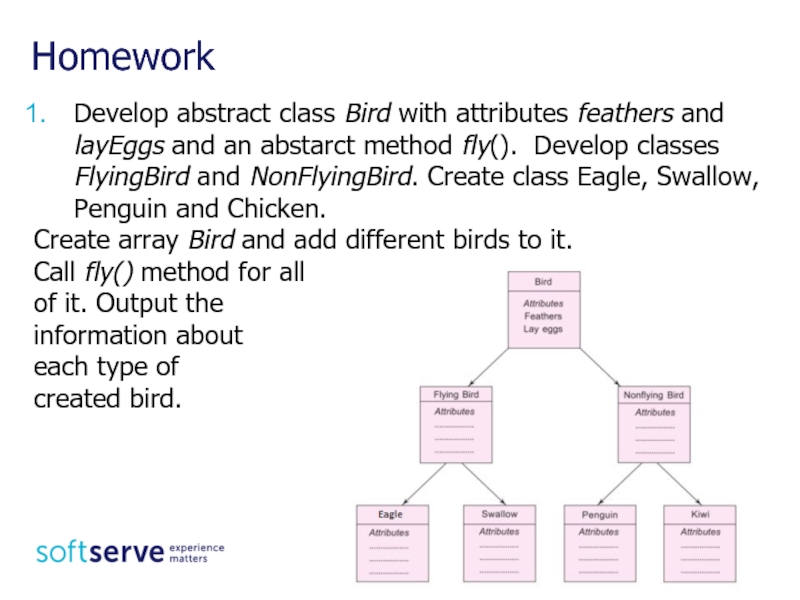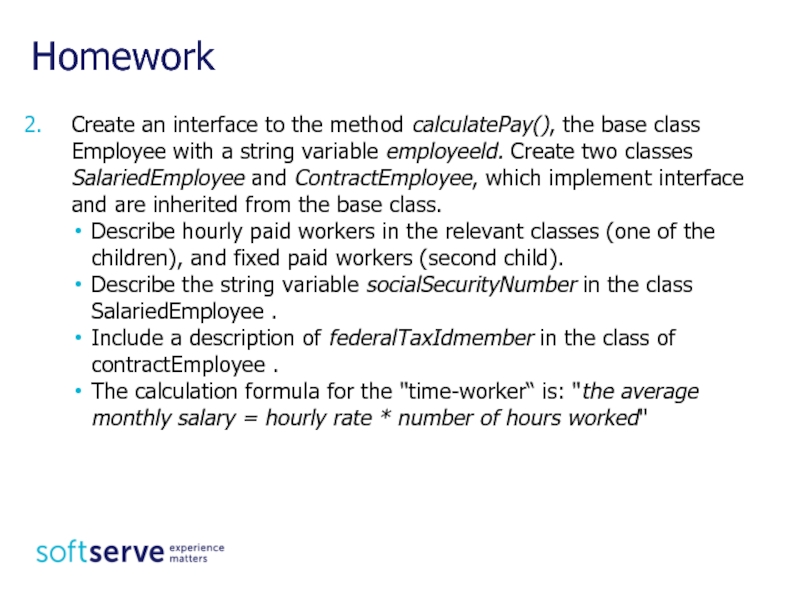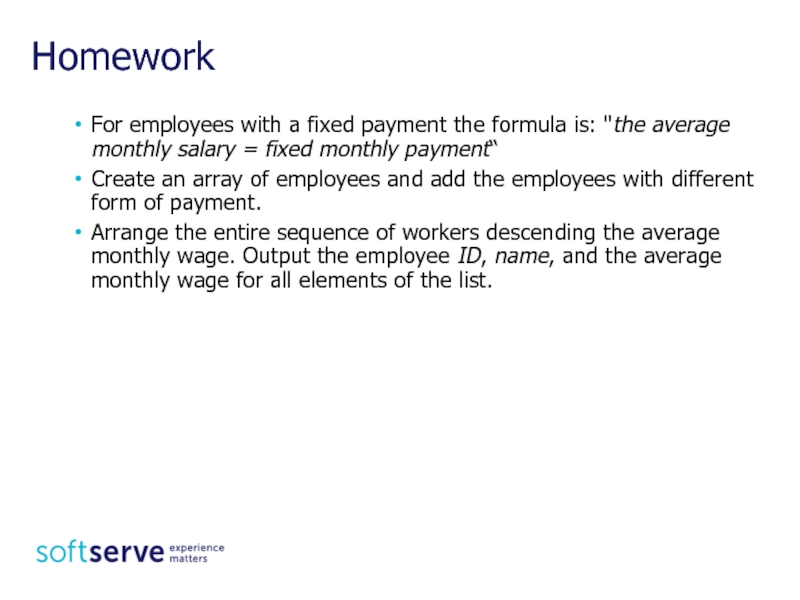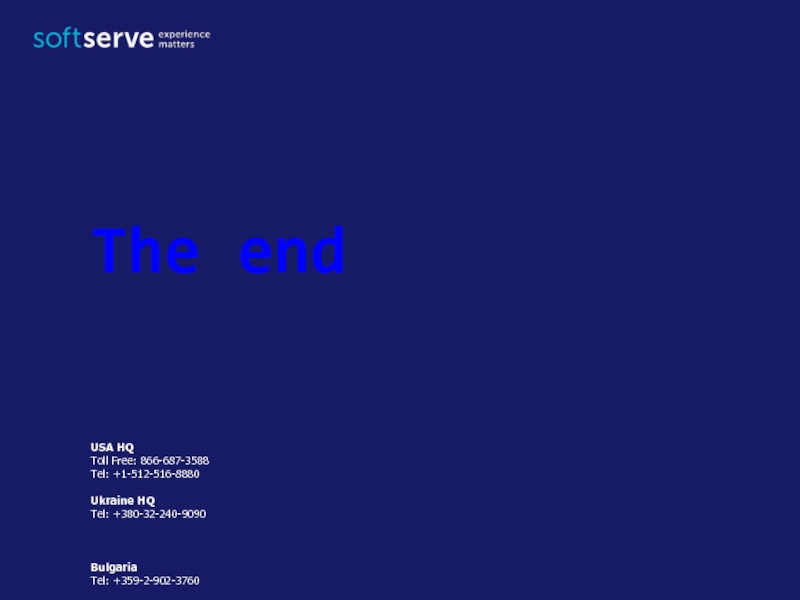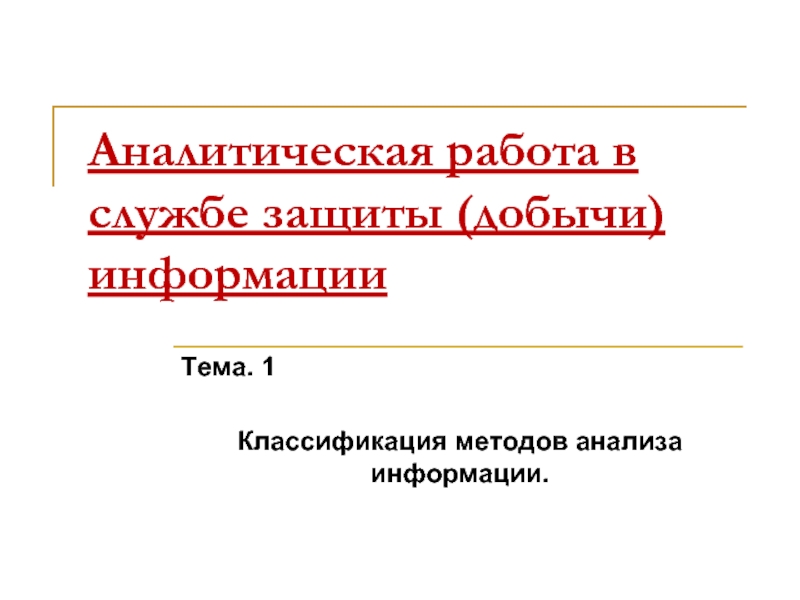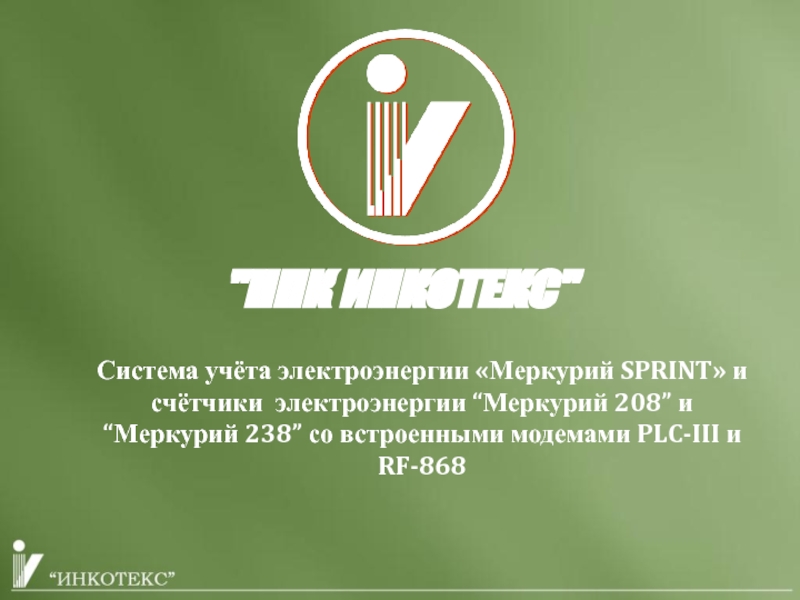- Главная
- Разное
- Дизайн
- Бизнес и предпринимательство
- Аналитика
- Образование
- Развлечения
- Красота и здоровье
- Финансы
- Государство
- Путешествия
- Спорт
- Недвижимость
- Армия
- Графика
- Культурология
- Еда и кулинария
- Лингвистика
- Английский язык
- Астрономия
- Алгебра
- Биология
- География
- Детские презентации
- Информатика
- История
- Литература
- Маркетинг
- Математика
- Медицина
- Менеджмент
- Музыка
- МХК
- Немецкий язык
- ОБЖ
- Обществознание
- Окружающий мир
- Педагогика
- Русский язык
- Технология
- Физика
- Философия
- Химия
- Шаблоны, картинки для презентаций
- Экология
- Экономика
- Юриспруденция
Java. Inheritance презентация
Содержание
- 1. Java. Inheritance
- 2. Agenda Java OOPs Concepts Abstract class Interface
- 3. Java OOPs Concepts Object Any entity that
- 4. Java OOPs Concepts Abstraction Hiding internal details
- 5. A class must be declared abstract when
- 6. /* The Figure class must be declared
- 7. public class Rectangle extends Figure {
- 8. An interface is a reference type in
- 9. public interface Dog { public boolean barks();
- 10. Java 8 enables us to add non-abstract
- 11. Besides the abstract method calculate the interface Formula also
- 12. Assignment operator. What will be done ?
- 13. Inheritance public class Circle { private double
- 14. Inheritance public class Cylinder extends Circle {
- 15. Inheritance // Getter and
- 16. public class ClassA { public int i
- 17. public class ClassB extends ClassA {
- 18. public class ApplAB { public static void
- 19. ClassB b = new ClassB();
- 20. The Start. Test ClassA. ClassA, metod m1,
- 21. What is wrong in the code ?
- 22. Let's check it package com.samples; import
- 23. public abstract class ACar {
- 24. public class BmwX6 extends ACar {
- 25. private void workedGearBox( ) {
- 26. public class BmwX6mod extends BmwX6 {
- 27. public class Appl { public
- 28. Class Diagram. Visibility and scope
- 29. Class Diagram
- 30. Class Diagram Our class diagram has three
- 31. Class Diagram. Multiplicities
- 32. Composition and aggregation
- 33. Dependencies and constraints
- 34. Class Diagram. Interfaces and stereotypes
- 35. final A final variable can only be assigned once
- 36. Practical tasks Create interface Animal with methods
- 37. HomeWork (online course) UDEMY course "Java Tutorial for Complete Beginners": https://www.udemy.com/java-tutorial/ Complete lessons 26-31:
- 38. Homework Develop abstract class Bird with attributes
- 39. Homework Create an interface to the method
- 40. Homework For employees with a fixed payment
- 41. The end
Слайд 2Agenda
Java OOPs Concepts
Abstract class
Interface
Inheritance in Java
Polymorphism
this, super
Object. Override
Final
Слайд 3Java OOPs Concepts
Object
Any entity that has state and behavior is known
Class
Collection of objects is called class. It is a logical entity.
Inheritance
When one object acquires all the properties and behaviors of parent object i.e. known as inheritance. It provides code reusability. It is used to achieve runtime polymorphism.
Polymorphism
When one task is performed by different ways i.e. known as polymorphism. For example: cat speaks meow, dog barks woof etc.
Слайд 4Java OOPs Concepts
Abstraction
Hiding internal details and showing functionality is known as
In java, we use abstract class and interface to achieve abstraction.
Encapsulation
Binding (or wrapping) code and data together into a single unit is known as encapsulation. For example: capsule, it is wrapped with different medicines.
A java class is the example of encapsulation. Java bean is the fully encapsulated class because all the data members are private here.
Слайд 5A class must be declared abstract when we need to forbid
Abstract class may has one or more abstract methods.
A method is declared abstract when it has a method heading, but no body – which means that an abstract method has no implementation code inside curly braces like normal methods do.
The derived class must provide a definition method;
The derived class must be declared abstract itself.
A non abstract class is called a concrete class.
Abstract Classes
Слайд 6/* The Figure class must be declared as abstract because it
public abstract class Figure {
/* because this is an abstract
method the body will be blank */
public abstract double getArea();
}
public class Circle extends Figure {
private double radius;
public Circle (double radius) {
this.radius = radius;}
public double getArea() {
return (3.14 * (radius * 2)); }
}
Abstract Classes
Слайд 7public class Rectangle extends Figure {
private double length, width;
public
this.length = lengt;
this.width = width;
}
public double getArea() {
return length * width;
}
}
Abstract Classes
Слайд 8An interface is a reference type in Java, it is similar
Along with abstract methods an interface may also contain constants, default methods, static methods, and nested types. Method bodies exist only for default methods and static methods.
An interface is essentially a type that can be satisfied by any class that implements the interface.
Any class that implements an interface must satisfy 2 conditions
It must have the phrase "implements Interface_Name" at the beginning of the class definiton;
It must implement all of the method headings listed in the interface definition.
Interfaces
Слайд 9public interface Dog {
public boolean barks();
public boolean isGoldenRetriever();
}
public class SomeClass implements
public boolean barks() {
// method definition here
}
public boolean isGoldenRetriever() {
// method definition here
}
}
Interfaces
Слайд 10Java 8 enables us to add non-abstract method implementations to interfaces
For example:
interface Formula {
double calculate(int a);
default double sqrt(int a) {
return Math.sqrt(a);
}
}
Default Methods for Interfaces
Слайд 11Besides the abstract method calculate the interface Formula also defines the default method sqrt.
Formula formula = new Formula() {
@Override
public double calculate(int a) {
return sqrt(a * 100);
}
};
formula.calculate(100); // 100.0
formula.sqrt(16); // 4.0
Default Methods for Interfaces
Слайд 12Assignment operator. What will be done ?
int num=1;
double data = 1.0;
data
class Aclass {
int field1 = 10;
}
class Bclass extends Aclass {
int field2 = 20;
}
Aclass a = new Aclass( );
Bclass b = new Bclass( );
a = b; // b = a; ???
Inheritance
Слайд 13Inheritance
public class Circle {
private double radius;
// Constructors
public
this.radius = 1.0;
}
public Circle(double radius) {
this.radius = radius; }
// Getters and Setters
// Return the area of this Circle
public double getArea() {
return radius * radius * Math.PI;
}
}
Слайд 14Inheritance
public class Cylinder extends Circle {
private double height;
public Cylinder() {
super(); // invoke superclass' constructor Circle()
this.height = 1.0;
}
public Cylinder(double height) {
super(); // invoke superclass' constructor Circle()
this.height = height;
}
public Cylinder(double height, double radius) {
// invoke superclass' constructor Circle(radius)
super(radius);
this.height = height;
}
Слайд 15Inheritance
// Getter and Setter
// Return the volume
public double getVolume() {
// Use Circle's getArea()
return getArea() * height;
}
// Describle itself
public String toString() {
return "This is a Cylinder";
}
}
Слайд 16public class ClassA {
public int i = 1;
public void m1() {
System.out.println("ClassA,
public void m2() {
System.out.println("ClassA, metod m2, i = " + i); }
public void m3() {
System.out.print("ClassA, metod m3,
runnind m4():"); m4(); }
public void m4() {
System.out.println("ClassA, metod m4");
}
}
Inheritance
Слайд 17public class ClassB extends ClassA {
public double i =
public void m1() {
System.out.println("ClassB, metod m1, i= " + i);
}
public void m4() {
System.out.println("ClassB, metod m4");
}
}
Automatically added default constructor.
Inheritance
Слайд 18public class ApplAB {
public static void main(String[] args) {
System.out.println("The
ClassA a = new ClassA();
System.out.println("Test ClassA.");
a.m1();
a.m2();
a.m3();
a.m4();
Inheritance
Слайд 19 ClassB b = new ClassB();
System.out.println("Test ClassB.");
b.m2();
b.m3();
b.m4();
ClassA b0 = new ClassB();
System.out.println("Test_0 ClassB.");
b0.m1();
b0.m2();
b0.m3();
b0.m4();
System.out.println("The End."); } }
Inheritance
Слайд 20The Start.
Test ClassA.
ClassA, metod m1, i=1
ClassA, metod m2, i=1
ClassA, metod m3,
ClassA, metod m4
Test ClassB.
ClassB, metod m1, i=1.1
ClassA, metod m2, i=1
ClassA, metod m3, runnind m4(): ClassB, metod m4
ClassB, metod m4
Test_0 ClassB.
ClassB, metod m1, i=1.1
ClassA, metod m2, i=1
ClassA, metod m3, runnind m4(): ClassB, metod m4
ClassB, metod m4
The End.
Inheritance
Слайд 21What is wrong in the code ?
Java Classes
package com.softserve.train;
public class Parent
int f( ) { return 1; }
public int useF() { return f(); }
}
package com.softserve.train2;
import com.softserve.train.Parent;
public class Child extends Parent {
int f() {
return 2;
}
}
Слайд 22Let's check it
package com.samples;
import com.softserve.train2.*;
public class OOPSamples {
public static
Слайд 23public abstract class ACar {
private double maxSpeed;
public
return maxSpeed;
}
public void setMaxSpeed(double maxSpeed) {
this.maxSpeed = maxSpeed;
}
abstract void carRides( );
}
Polymorphism
Слайд 24public class BmwX6 extends ACar {
public BmwX6( ) {
@Override
public void carRides( ) {
setMaxSpeed(200);
System.out.println("Car Rides");
workedEngine( );
workedGearBox( );
}
public void workedEngine( ) {
System.out.println("BmwX6: Engine Running
on Petrol.");
System.out.println("BmwX6: Max Speed: " +
getMaxSpeed( ));
}
Polymorphism
Слайд 25 private void workedGearBox( ) {
System.out.println("BmwX6: Worked
}
public void lightsShine( ) {
System.out.println("BmwX6: Halogen Headlights.");
}
}
inheritance of private fields and methods ?
Polymorphism
Слайд 26public class BmwX6mod extends BmwX6 {
public BmwX6mod( ) {
}
@Override
public void workedEngine( ) {
System.out.println("BmwX6mod: Engine
Running on Diesel.");
System.out.println("BmwX6mod: Max Speed: " +
getMaxSpeed( ));
}
@Override
public void lightsShine( ) {
System.out.println("BmwX6mod: Xenon Headlights.");
super.lightsShine();
}
}
Polymorphism
Слайд 27public class Appl {
public static void main(String[ ] args)
ACar carX6 = new BmwX6( );
carX6.carRides( );
((BmwX6)carX6).lightsShine( );
ACar carX6mod = new BmwX6mod( );
carX6mod.carRides( );
((BmwX6)carX6mod).lightsShine( );
BmwX6 carX6mod2 = new BmwX6mod( );
carX6mod2.carRides( );
carX6mod2.lightsShine( );
}
}
Polymorphism
Слайд 30Class Diagram
Our class diagram has three kinds of relationships.
association -- a
aggregation -- an association in which one class belongs to a collection. An aggregation has a diamond end pointing to the part containing the whole. In our diagram, Order has a collection of OrderDetails.
generalization -- an inheritance link indicating one class is a superclass of the other. A generalization has a triangle pointing to the superclass. Payment is a superclass of Cash, Check, and Credit.
Слайд 35final
A final variable can only be assigned once and its value cannot be
Constants are variables defined
final double RADIUS = 10;
A final method cannot be overridden by subclasses
public final void myFinalMethod() {...}
A final class cannot extend
public final class MyFinalClass {...}
Слайд 36Practical tasks
Create interface Animal with methods voice() and feed(). Create two
Create next structure. In abstract class Person with property name, declare abstract method print(). In other classes in body of method print() output text “I am a …”. In class Staff declare abstract method salary(). In each concrete class create constant TYPE_PERSON. Output type of person in each constructors. Create array of Person and add some Teachers, Cleaners and Students to it. Call method print() for all of it. Call method salary() for all Teachers and Cleaner
Слайд 37HomeWork (online course)
UDEMY course "Java Tutorial for Complete Beginners": https://www.udemy.com/java-tutorial/
Complete lessons
Слайд 38Homework
Develop abstract class Bird with attributes feathers and layEggs and an
Create array Bird and add different birds to it.
Call fly() method for all
of it. Output the
information about
each type of
created bird.
Слайд 39Homework
Create an interface to the method calculatePay(), the base class Employee
Describe hourly paid workers in the relevant classes (one of the children), and fixed paid workers (second child).
Describe the string variable socialSecurityNumber in the class SalariedEmployee .
Include a description of federalTaxIdmember in the class of contractEmployee .
The calculation formula for the "time-worker“ is: "the average monthly salary = hourly rate * number of hours worked"
Слайд 40Homework
For employees with a fixed payment the formula is: "the average
Create an array of employees and add the employees with different form of payment.
Arrange the entire sequence of workers descending the average monthly wage. Output the employee ID, name, and the average monthly wage for all elements of the list.
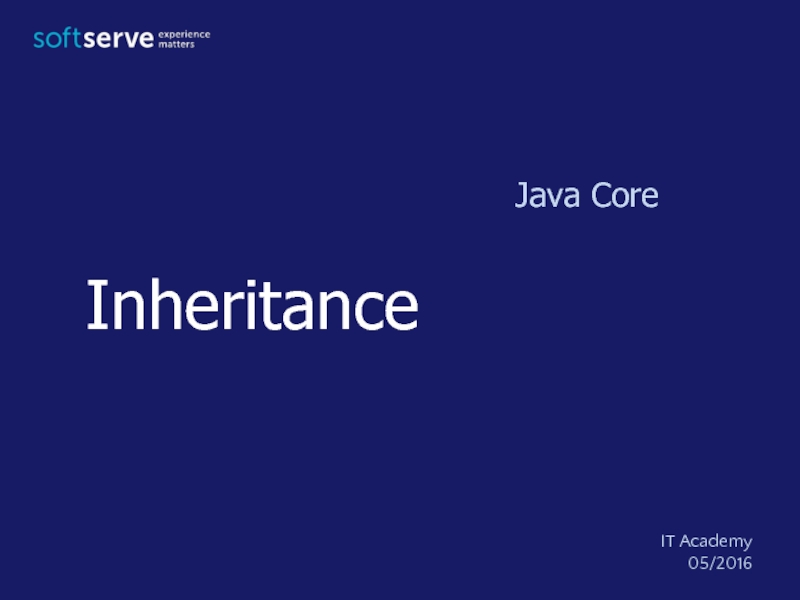
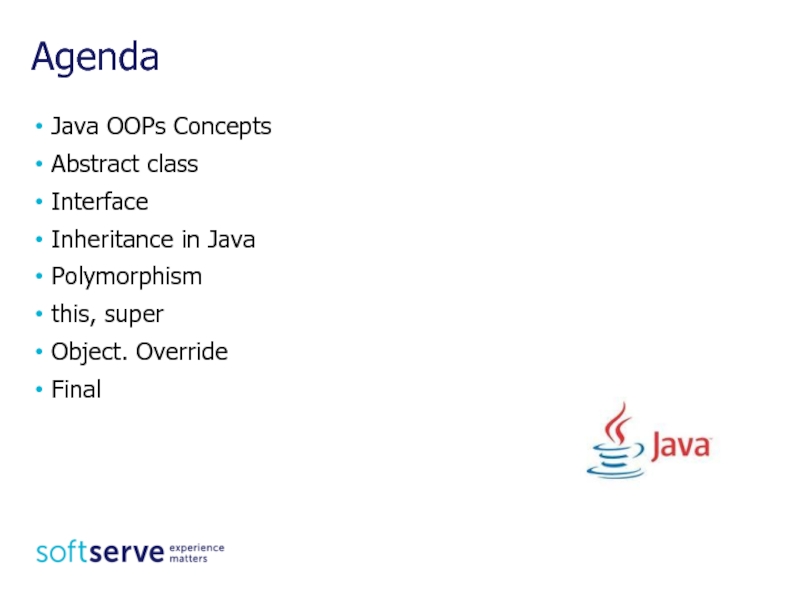
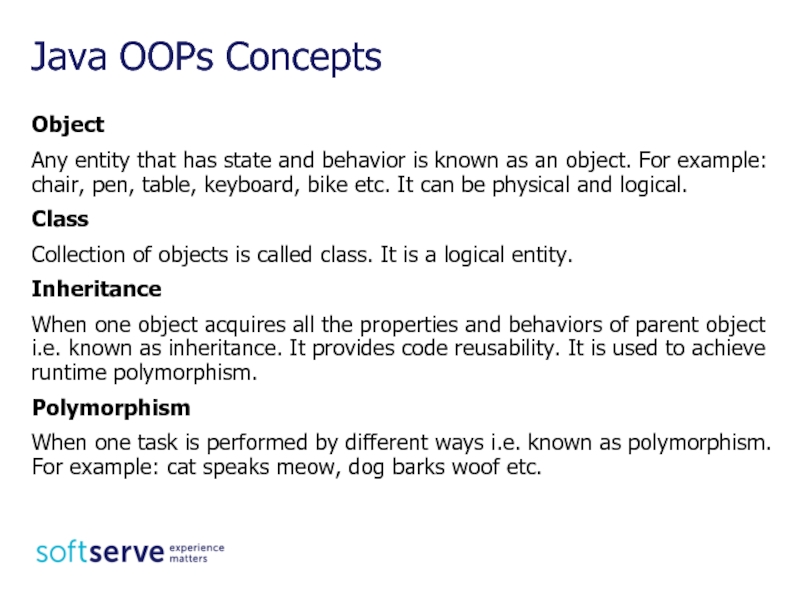
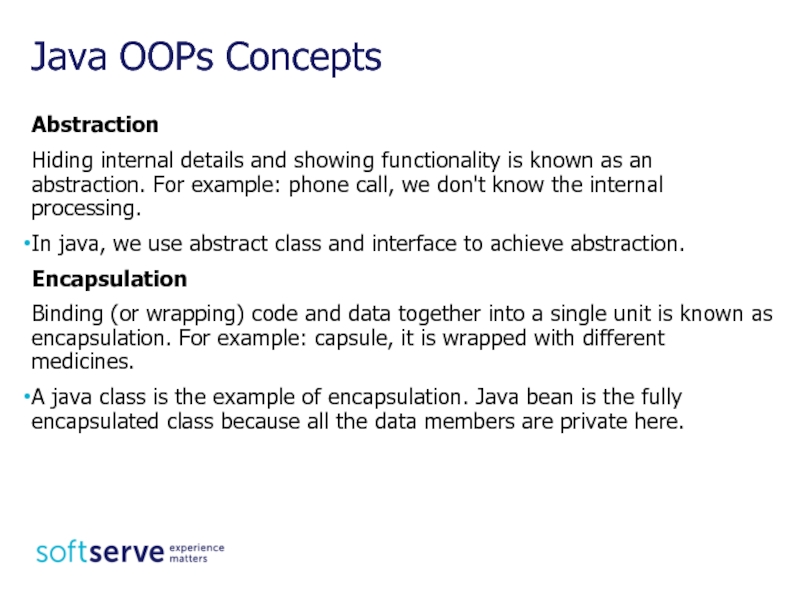
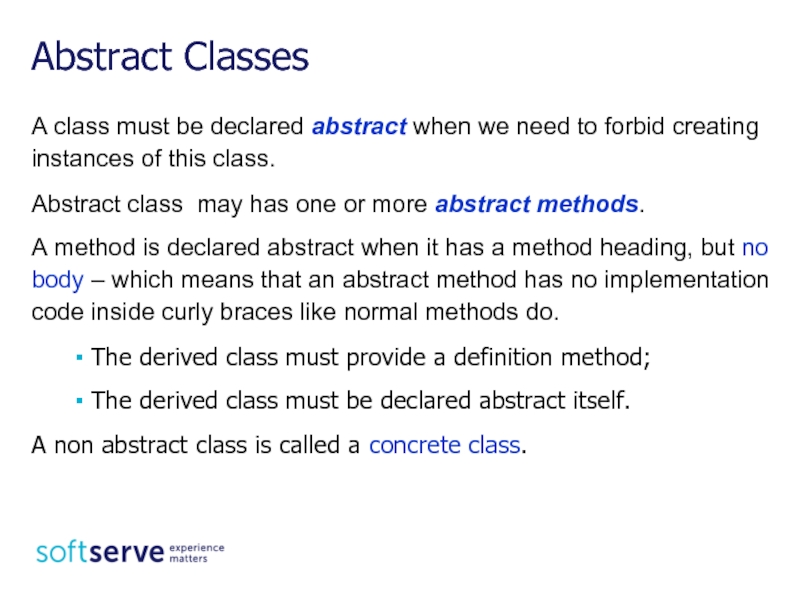

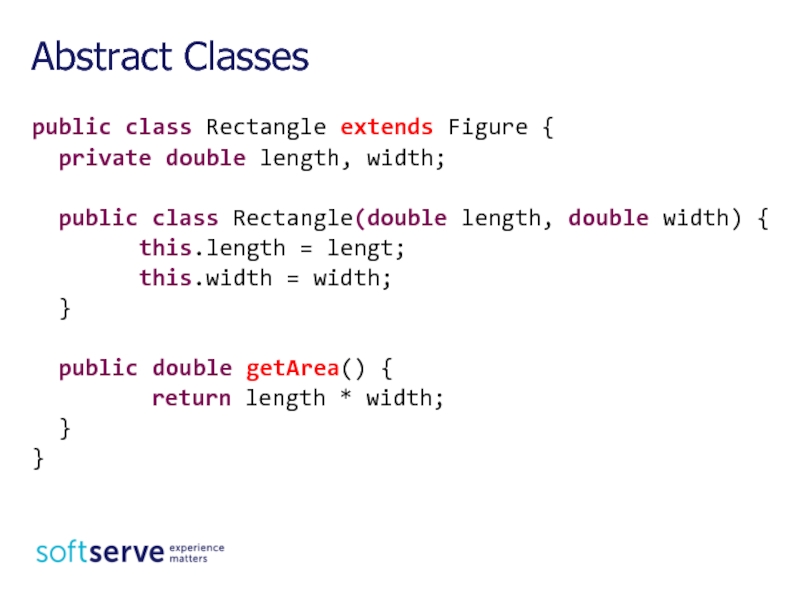
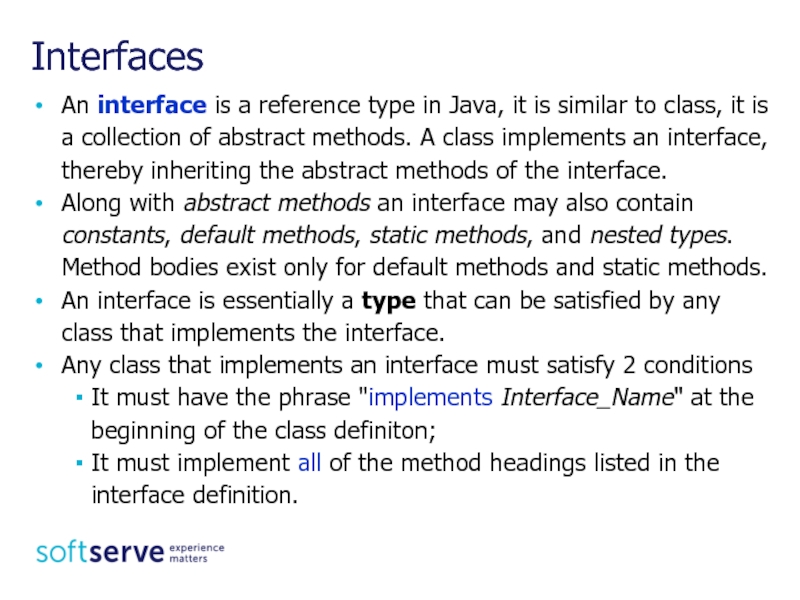
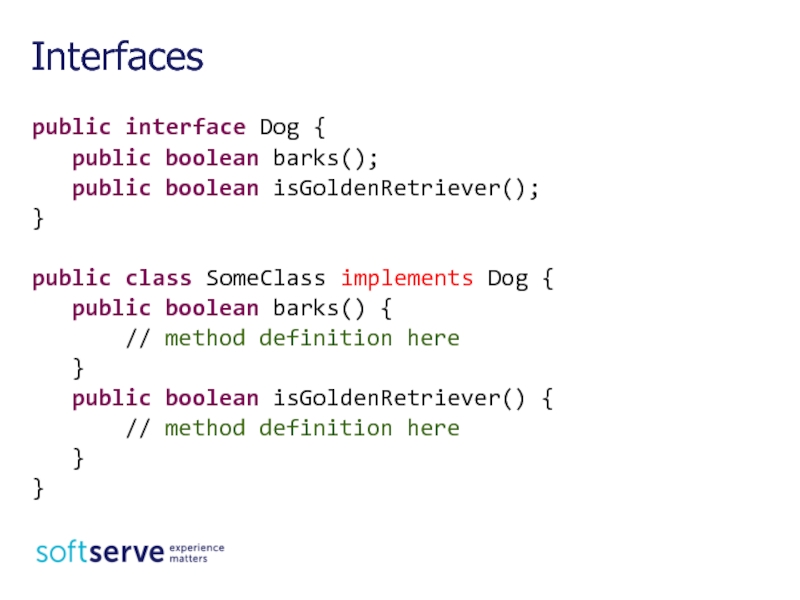
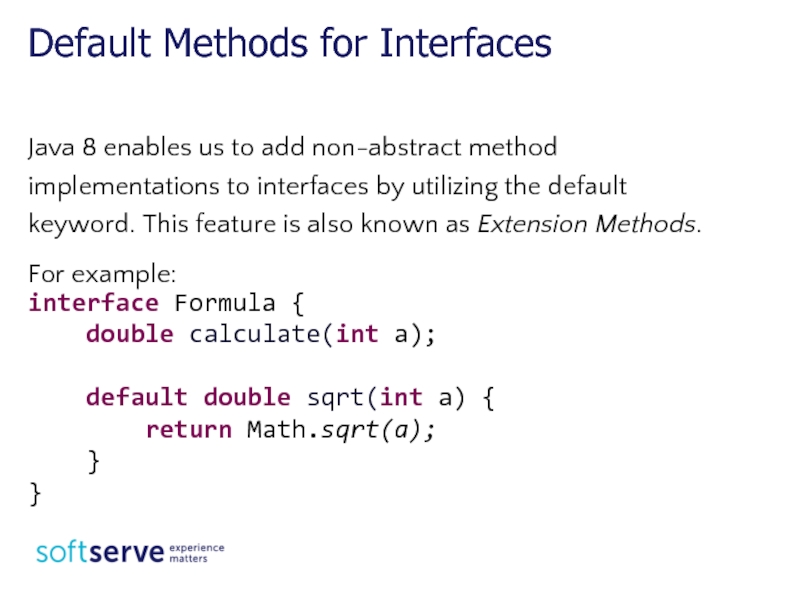
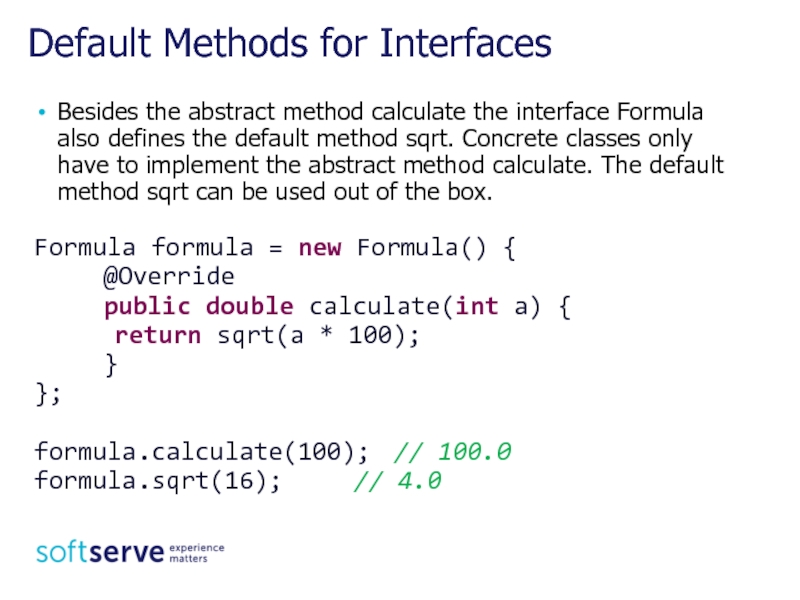
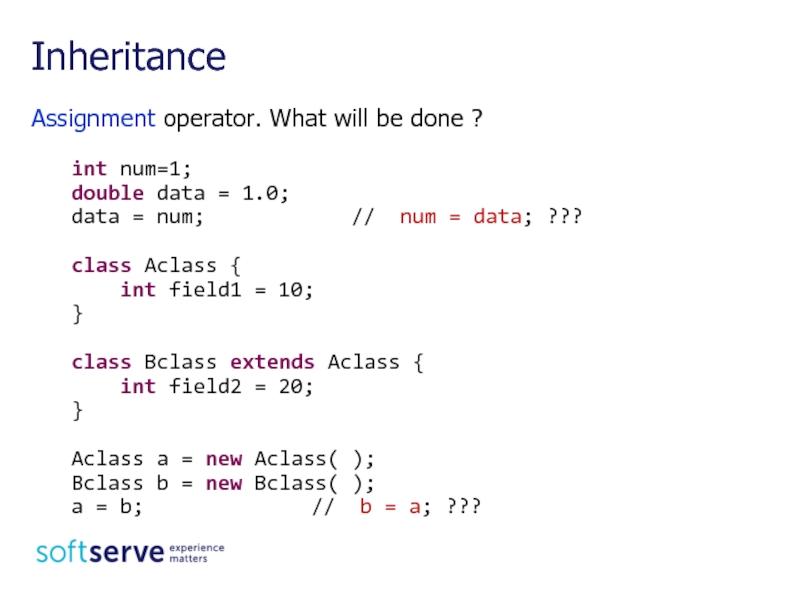
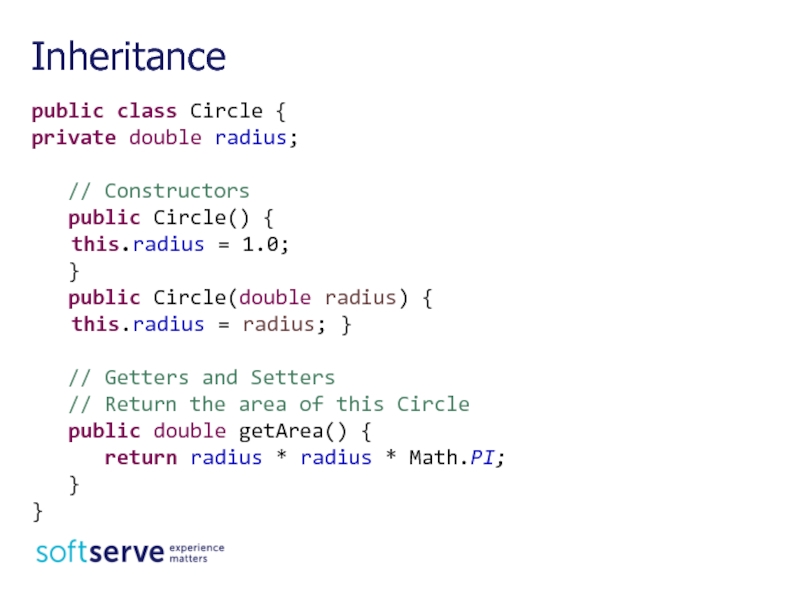
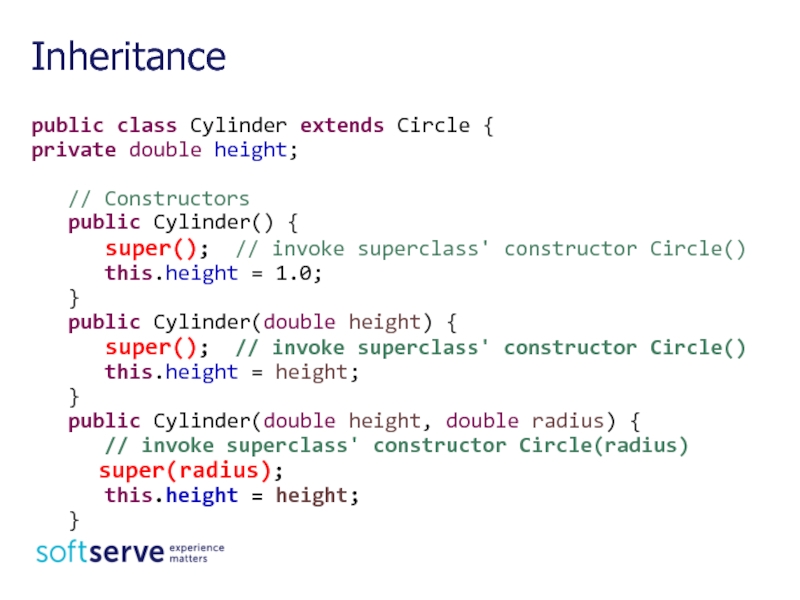
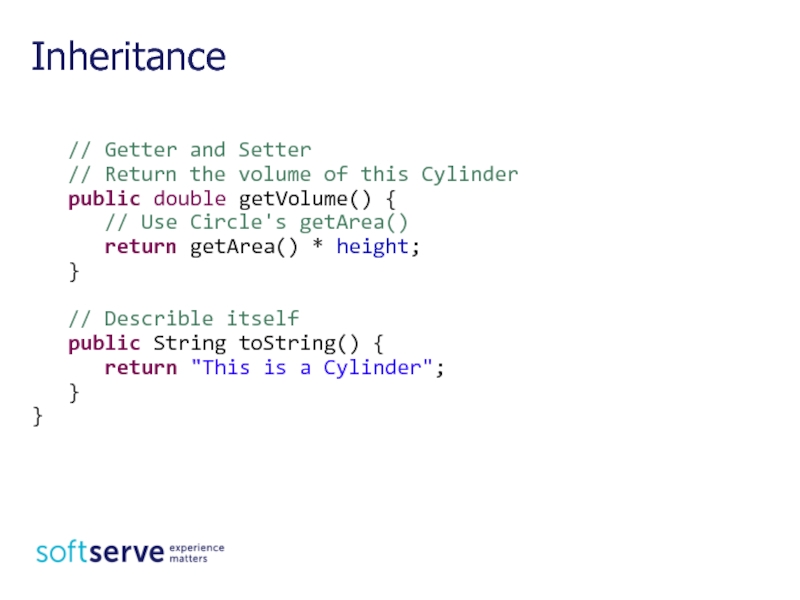
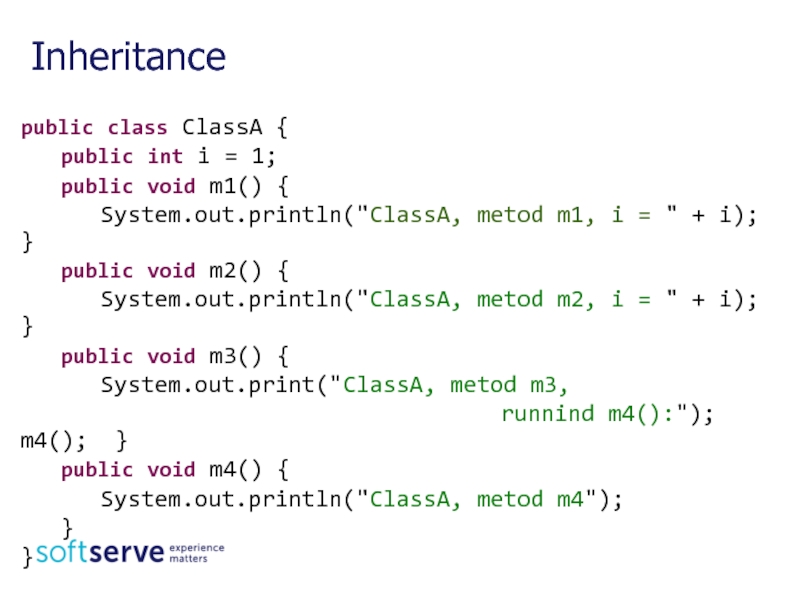
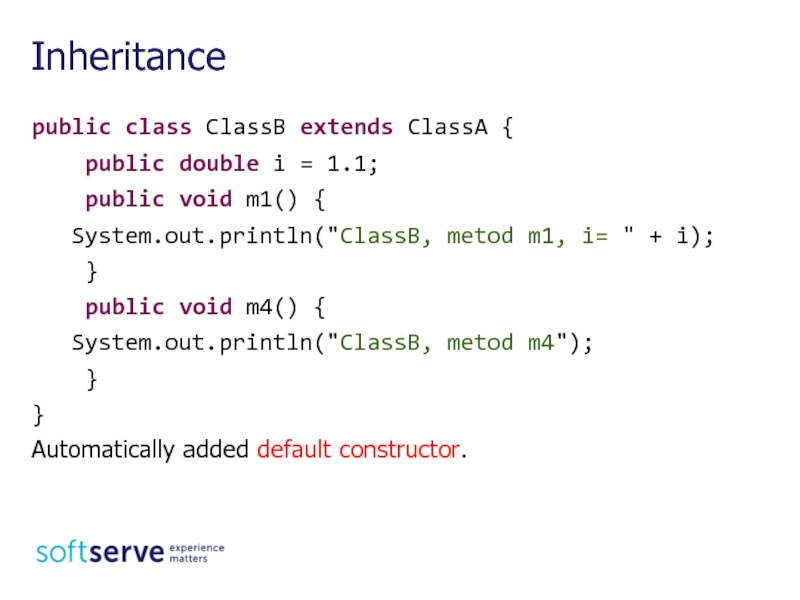
![public class ApplAB { public static void main(String[] args) { System.out.println(](/img/tmb/2/141156/e2db41e7e450b17b75d2021c1cdc6941-800x.jpg)

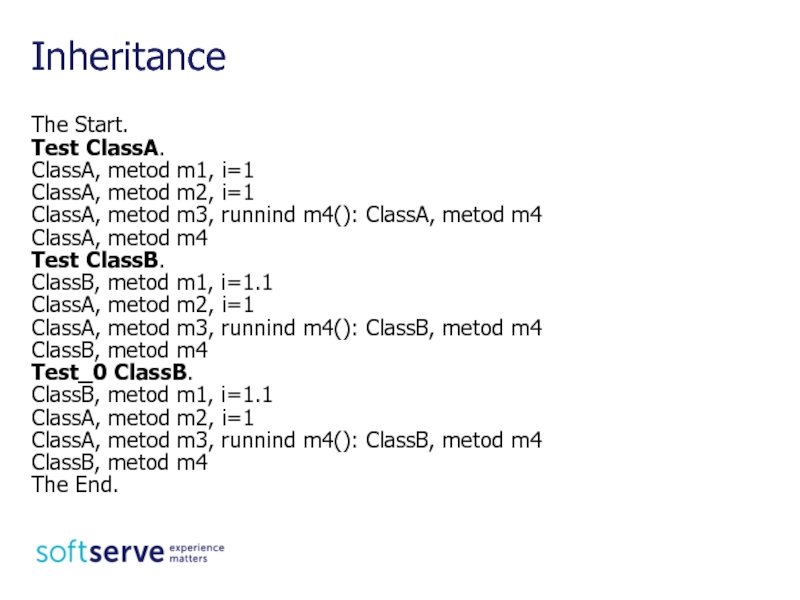
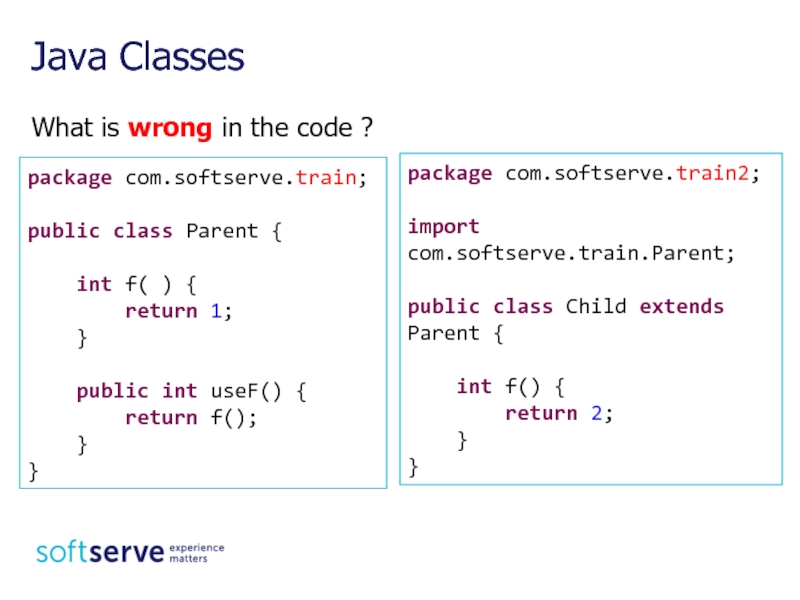
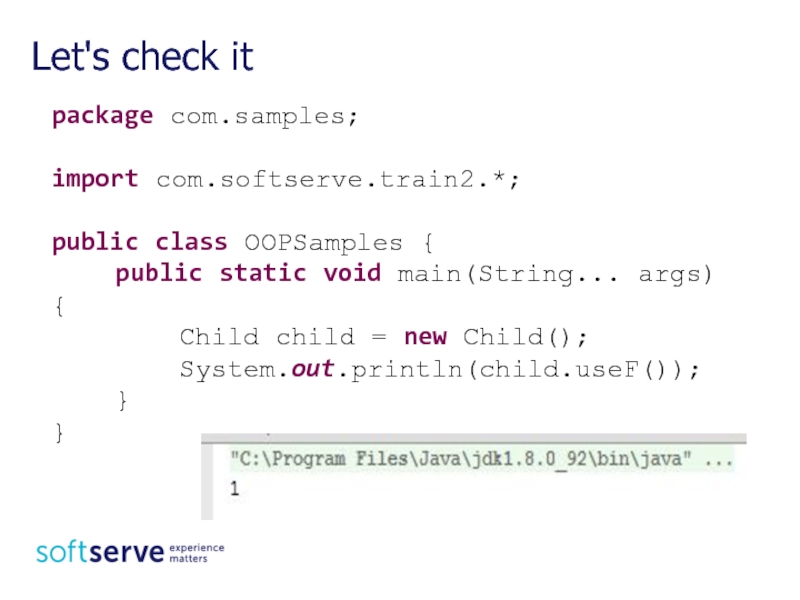
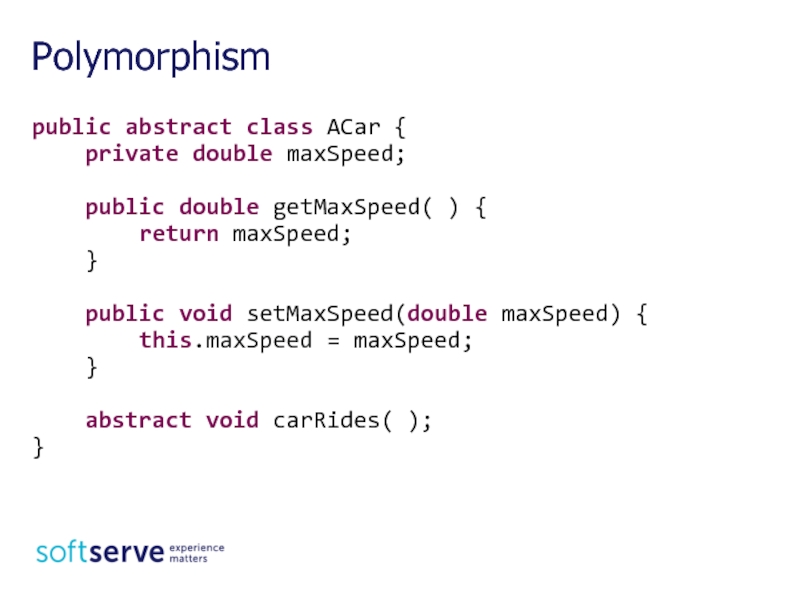
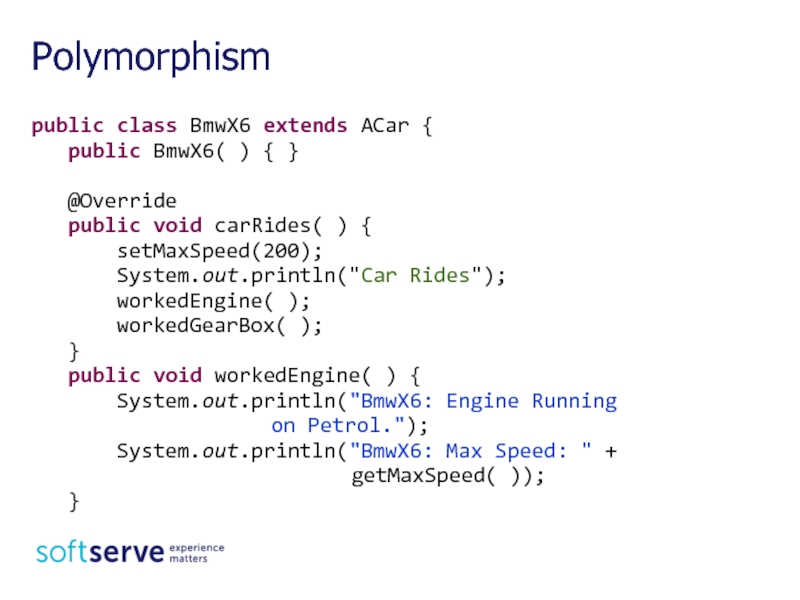

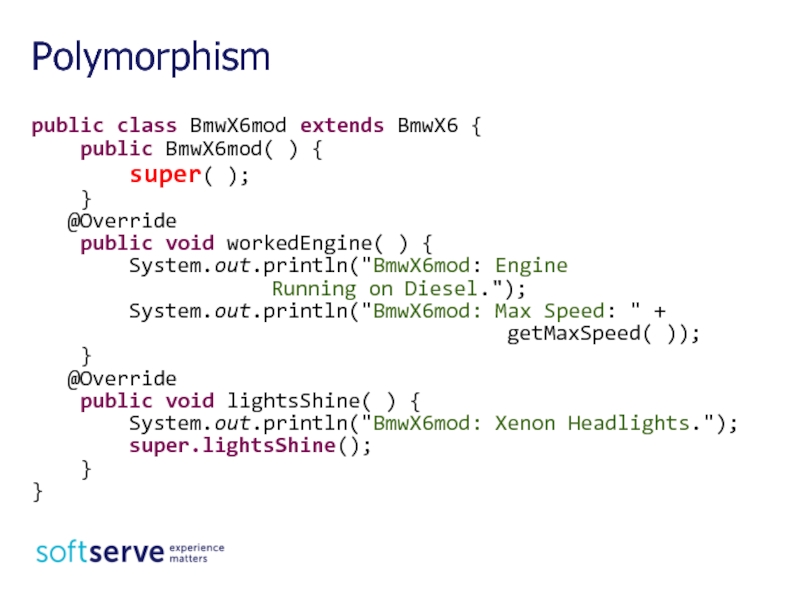
![public class Appl { public static void main(String[ ] args) { ACar carX6 =](/img/tmb/2/141156/aa5271b28d98dec3ade1c6da345a45aa-800x.jpg)
